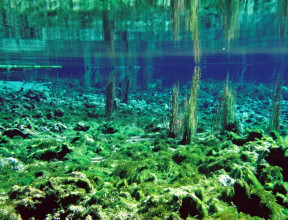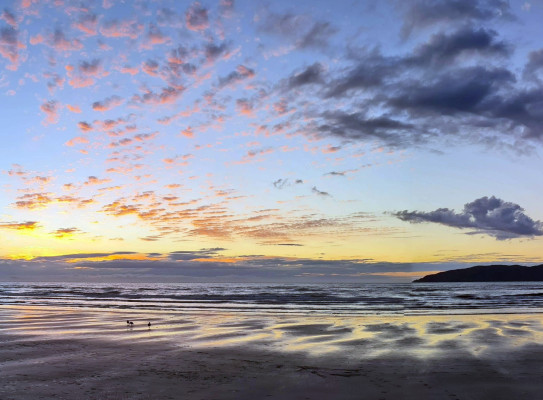
Vertical land movement

Which parts of Aotearoa New Zealand’s coastline are rising, and which parts are falling? We now have a much better idea having created the first estimate of vertical land movement (VLM) for our entire coastline.
VLM is a key tool in understanding sea-level rise and the future of our coastal communities and infrastructure.

The Earth’s land surface is changing shape as the last ice sheets recede. Land that carried the bulk of those sheets is rising –that’s much of the Northern Hemisphere, Antarctica’s continental shelves , and our South Island. Technically, this is glacial isostatic adjustment (GIA).
The vertical position of our coastlines is also changing thanks to living on a plate boundary. Satellites show that parts of our coast are rising by 1cm a year and others sinking by up to 5mm a year.
Conventional methods to measure vertical movement along our 15,000km-long coastline are near impossible. You need satellites – in this case, InSAR and GNSS which provide spaceborne geodetic observations. InSAr is Interferometric Synthetic Aperture Radar, and GNSS is Global Navigation Satellite Systems.
What causes vertical land movement? – Hear from project leader of NZ SeaRise: Te Tai Pari O Aotearoa on how this works transcript
Because New Zealand is sitting on a plate boundary, you've got the Australian plate and the Pacific plate basically crashing into each other and that creates uplift and mountains. So a lot of New Zealand in the long term historically has gone up.
Something interesting is happening off the eastern margin of the North Island of New Zealand, and that is where the Pacific plate is going down, being pushed down under the Australian plate and it locks, it grips, and it pulls the land down. So in the lower North Island and on the eastern side of the lower North Island, the land is actually subsiding, going down at quite high rates of up to eight millimetres per year. Right here on the south coast of Wellington at Lyall Bay, the subsidence is three to four millimetres per year, which is effectively doubling the amount of sea level rise we can expect.
GNSS helps accurately determine vertical, and lateral, movement at sites along our coast, but it still limited. It doesn’t include many regions of interest such as coastal deltas and sedimentary basins where urban areas are often located. However, when we combine GNSS and InSAR, we get an almost continuous estimate of VLM around our coastline. It’s so accurate , we can detect millimetre-sized surface displacements.
Together with historical InSAR images gathered by the European Space Agency between 2003 and 2011, we created this first VLM map.
-
What we have found
There are interesting variations of VLM on our coastline:
- Extensive variations because of volcanic, tectonic and anthropogenic (human) activities.
- Extensive subsidence of around 5mm/year along the east coast of the North Island. This is largely because the Pacific Plate is diving beneath the North Island.
- In the Bay of Plenty, there’s a 30km-long uplift rising about 10mm/year.
- Localised uplift in the Southern Alps
-
The challenges
Earthquakes distort the readings. For example, North of Kaikoura, land was subsiding 2-3mm/year until the 2016 earthquake which dramatically uplifted the land.
-
Why this is important
VLM may lessen the effects of sea-level rise on coastal communities and infrastructure. If we eliminate present-day earthquake-cycle deformation, we can use geological estimates of VLM to predict future changes.
Regions such as the Hikurangi subduction have strong earthquake-cycle events resulting in VLM, and this may help us forecast motion in the next few decades.
We have generated the first VLM map of New Zealand’s coastline using historical images from the European Space Agency’s Envisat satellite. These have helped us minimise the influence of some of our larger, recent earthquakes.

